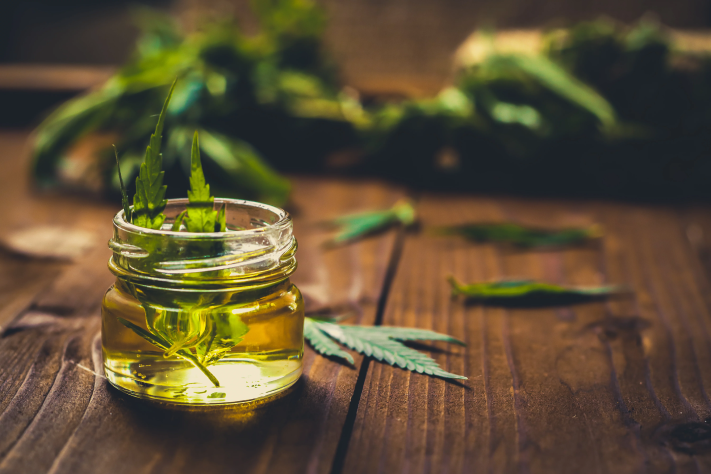In recent years, CBD (cannabidiol) has gained immense popularity for its potential health benefits and wellness properties. From oils and tinctures to edibles and skincare products, CBD can be found in a variety of forms, transforming the wellness industry, and attracting a vast number of consumers. However, the origins of CBD are deeply rooted in the history of cannabis and its long relationship with humanity. Let's take a journey through time to explore the fascinating origins of CBD.
Ancient Roots: Cannabis in Early Civilizations
The story of CBD begins with the cannabis plant itself. Cannabis, also known as marijuana, has a rich history dating back thousands of years. Evidence suggests that cannabis was cultivated as early as 4000 BCE in regions such as China and Central Asia. In these ancient civilizations, cannabis was valued for its versatile properties, including its use as a source of fiber, food, and medicine. Cannabis also holds a historical connection to ancient Egypt, where its usage is believed to have held cultural and medicinal significance. Archaeological evidence and Egyptian texts suggest that cannabis may have been employed for its psychoactive and therapeutic properties as well. The plant, known as "shemshemet," was used for medicinal and religious purposes. Hieroglyphs depict its consumption in religious ceremonies, while its medicinal benefits are noted in medical papyri.
Traditional Medicine and Cannabis
Ancient cultures were aware of the effects of cannabis, which was frequently incorporated into traditional medical practices. Ancient Chinese texts, for instance, documented the use of cannabis for various ailments, such as pain relief and digestive issues. In India, cannabis played a significant role in Ayurvedic medicine, believed to bring balance to the body and mind. The Egyptians possibly utilized cannabis in various forms, including as incense or in ointments for pain relief. While the exact extent of its role remains debated, it is evident that cannabis held a unique place in the spiritual and medical practices of ancient Egypt, showcasing the enduring relationship between humanity and this versatile plant.
The Discovery of CBD
The specific discovery of CBD is attributed to a British chemist, Dr. Roger Adams, in 1940. Dr. Adams was conducting research on cannabis extracts and managed to isolate CBD for the first time. Although he initially referred to the compound as "Cannabidiol," it later became known as "cannabidiol" (CBD). However, the full chemical structure of CBD was not elucidated until several years later.
The next milestone in understanding CBD came in the 1960s when Israeli scientist Dr. Raphael Mechoulam made groundbreaking discoveries about the cannabis plant. In 1963, Dr. Mechoulam and his team successfully identified the stereochemistry of CBD, which refers to the three-dimensional arrangement of its atoms. Shortly after, in 1964, they isolated and identified another important cannabinoid – tetrahydrocannabinol (THC). This discovery paved the way for a better understanding of the various compounds found in cannabis and how they interact with the human body's endocannabinoid system.
CBD and the Endocannabinoid System
The endocannabinoid system (ECS) was not discovered until the late 1980s and early 1990s. Scientists were trying to understand how cannabis compounds affected the body when they stumbled upon a complex network of receptors and endocannabinoids – compounds naturally produced by the human body. The discovery of the ECS shed light on the mechanism of action of cannabinoids like CBD.
CBD in Modern Times
Over the past few decades, research into the potential benefits of CBD has intensified, and its popularity has surged. In 1996, California became the first U.S. state to legalize medical marijuana, leading to a significant increase in interest and research on CBD and other cannabinoids. Since then, numerous other states followed suit and have legalized medical or recreational cannabis use. As of today, 38 states in the US now allow some form of medical cannabis use, and 21 states plus Washington D.C. have legalized recreational cannabis use in adults 21 and over.
The Farm Bill and the Global CBD Boom
One of the most significant turning points for CBD came in 2018 with the passage of the United States Farm Bill. This bill legalized the cultivation of industrial hemp, a variety of cannabis with low THC levels, and removed CBD derived from hemp from the list of controlled substances. This paved the way for a surge in CBD production and sales, making CBD products more accessible to consumers across the country.
The popularity of CBD has transcended borders, and it is now used and researched worldwide. Many countries have adopted various approaches to regulate CBD and cannabis products, with some embracing a more open-minded approach to their medicinal and therapeutic potential.
The origins of CBD are deeply intertwined with the history of cannabis and its traditional use as medicine. From ancient civilizations to modern scientific discoveries, CBD's journey has been long and filled with twists and turns. Today, CBD stands as a symbol of hope for those seeking alternative natural remedies, and its potential benefits continue to be explored through ongoing research and development. As we move into the future, it is essential to remember the historical significance of CBD and cannabis in general and the cultural connections that make it a truly remarkable plant.


